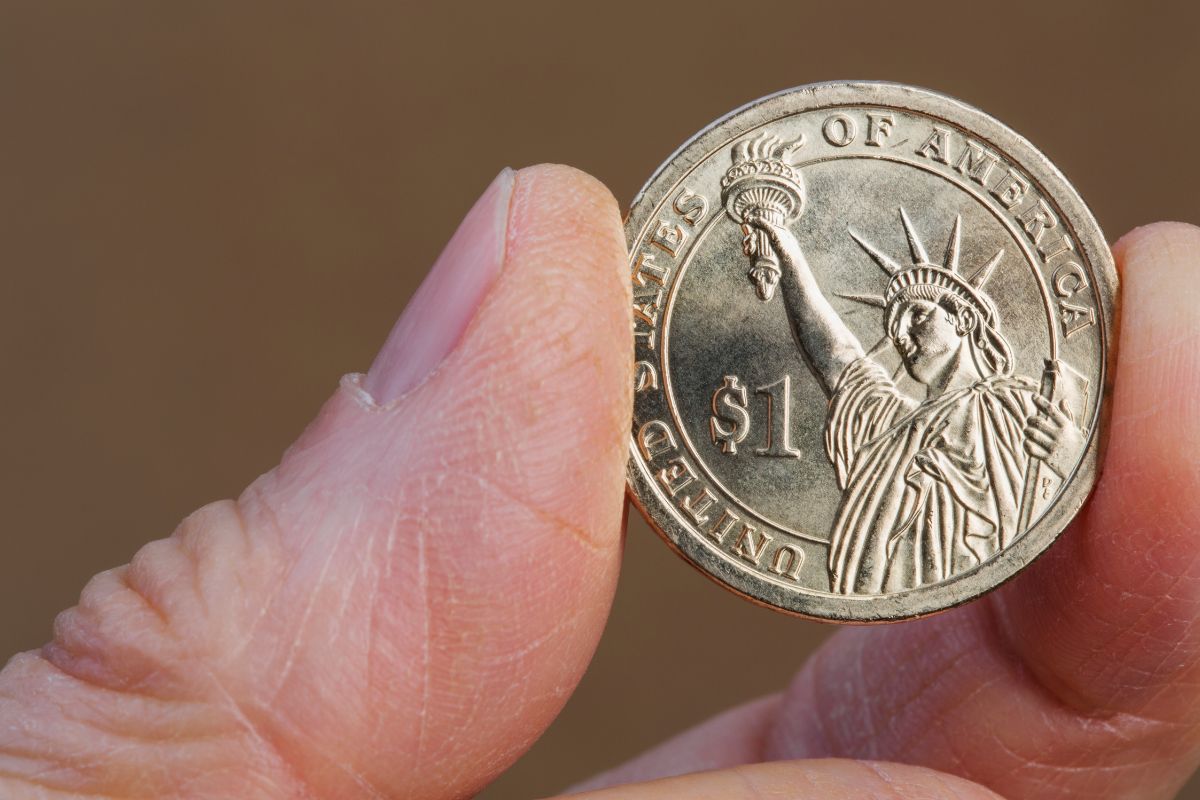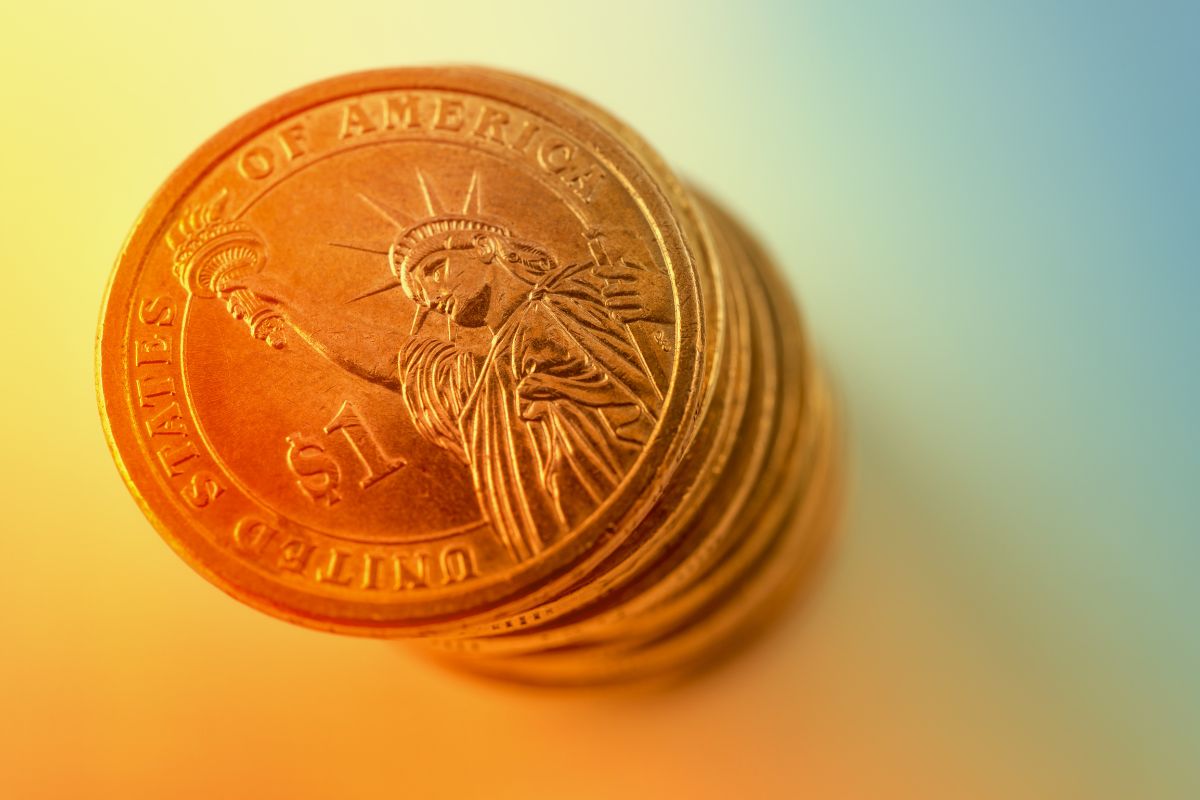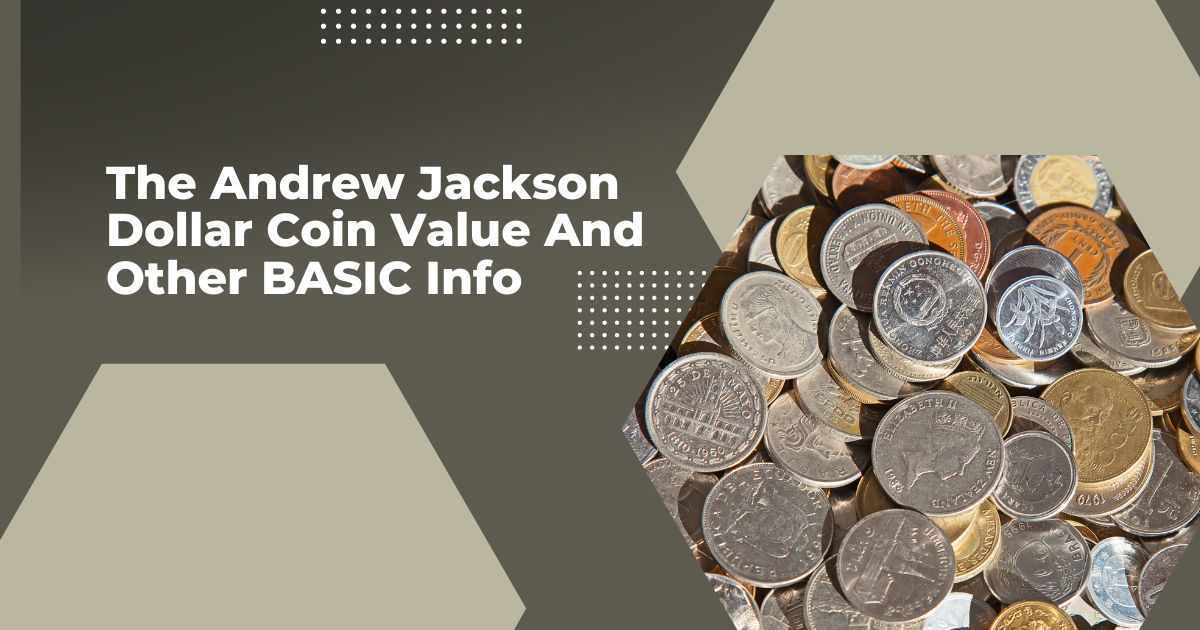Who was Andrew Jackson?
This article highlights Andrew Jackson’s dollar coin value. Andrew Jackson, a Tennessee native, was the first president chosen from a region west of the Appalachian Mountains.
He participated in the Revolutionary War as a young man. Jackson rose to national prominence as a War of 1812 hero and earned the moniker “Old Hickory” for maintaining strict discipline while leading his troops. Jackson as president, vetoed more bills than the six presidents before him.

How Much is an Andrew Jackson Gold Dollar Coin Worth?
You may wonder how much is an Andrew Jackson gold dollar worth. In circulated condition, the 2008 Andrew Jackson dollar coins are only worth their face value of $1.00. You can only purchase these coins in uncirculated condition.
In uncirculated form with an MS 65 grade, the 2008 P Andrew Jackson dollar coin and the 2008 D Andrew Jackson 1 dollar coin value is around $3.75. In PR 65 condition, the 2008 S-proof Andrew Jackson coin has a value of about $4.
Coin Specifications
Type: Presidential Dollar
Face value: $1.00
Total weight: 0.3 ounces (8.1 grams)
Year: 2008
Composition: 6% zinc,88.5% copper, 3.5% manganese, 2% nickel
The seventh President of the United States was Andrew Jackson. The Andrew Jackson Dollar was thus also the sixth design production under the Presidential Dollar Coin Program.
- Obverse: Andrew Jackson’s symbol or image is on the coin, along with the words Andrew Jackson, inscribed just above it. The words “7th President 1829–1837,” representing the years that Jackson presided over the United States, are just underneath Jackson.
- Reverse: The coin’s reverse shows the Statue of Liberty with the $1 symbol, which denotes the coin’s legal tender value, beneath Liberty’s right arm. The coin also has the words “United States of America” ringed around it.
- Edge: The coins’ edges will include the words 2008-D and the D mint mark, which stand for the Mint where the coins originate and relate to the date they were formally brought into circulation. Coins with the circulation strike go through a Schuler edge lettering machine, which adds text to the coin’s edge.
- Position B: When the President’s portrait is facing up, the coin’s edge writing reads normally.
- Release date: On August 14, 2008, the Andrew Jackson circulation strike Presidential Dollars went on sale.
- Public law: The Presidential Dollar Coin Program Act, permitted by Public Law 109-145, was the legal framework for producing the Andrew Jackson Dollars.

The Coin Grading System
- MS 65 gem uncirculated– Strong shine and eye appeal characterize this MS 65 gem uncirculated coin. There might be a few little contact marks, but they are hardly discernible.
- PR 65 proof-This coin is perfect; it has no faults. There might be a few imperfections.
Jackson Coin Legislation Explained
- Act of June 25, 1834, governs the legal tender value of specific foreign silver coins.
- June 28, 1834 – This act governs the legal tender value of specific foreign gold pieces.
- Act of June 28, 1834 — This act establishes the standard weight of U.S. gold coins, the benchmark for payment for gold or silver deposited for coinage, the rate at which gold coins shall be receivable, and specifies the separation of gold coins for assay.
- Act of March 3, 1835 – This act created branches of the United States Mint in Charlotte, North Carolina, and Dahlonega, Georgia, for the production of gold coins and a branch in New Orleans, Louisiana, for the production of silver and gold coins.
- Act of January 18, 1837, This act:
- Outlines the responsibilities and raises the pay for United States Mint personnel, with the Director earning $3,500 per year, including travel costs;
- Outlines the composition and weight of gold and silver coins, mandates that each coin produced by the United States Mint have an impression of liberty on one side with the word “Liberty” and the year of coinage, and specifies that gold and silver coins must also have an image of an eagle with the words “United States of America” on the reverse. When gold or silver bullion gets to the Mint for coinage, you must remove the eagle’s image from the back of the dime, half dime, penny, and half a cent.
Coin Characteristics
Obverse Inscriptions
- Andrew Jackson
- 7th president
- 1829 to 1837
Reverse Inscriptions
- United States Of America
- $1
Incused (edge) Inscriptions
- 2008
- E Pluribus Unum
- In God, We Trust
- The Mint Mark (“P,” “D,” Or “S”)
Mint and Mint Mark
- Denver
- Philadelphia
The 2008 P proof Andrew Jackson dollar coin, 2008 D Andrew Jackson dollar coin, and 2008 S Andrew Jackson dollar coin were all produced by the US. On the coin’s edge, you can see the mint mark.
Coins with additional detail bear the name-proof coins. They take longer to produce because they are on unique planchets. Since their creators had collectors in mind, you won’t find any in your spare change.
Artist Information
Obverse
- Sculptor: Jim Licaretz, Sculptor-Engraver
- Designer: Joel Iskowitz
Reverse
- Don Everhart, Sculptor-Engraver

In Conclusion…
You now have all the information concerning Andrew Jackson’s dollar coin value and more. The Presidential dollar coin is one of the boldest and most gorgeous coins the US Mint has ever produced.
It stands out among circulating coins because of the typical phrase “E Pluribus Unum,” the date of issuance, and the mint mark relocated to the coin’s edge. The Statue of Liberty is on the coin’s reverse.
In the order they served, each president will get honored on the $1 Presidential Coin series. However, the series will not feature any current presidents. Andrew Jackson, a Tennessee native, was the first president chosen from a region west of the Appalachian Mountains.
He participated in the Revolutionary War as a young man. Jackson rose to public notoriety as a War of 1812 hero and earned the moniker “Old Hickory” for maintaining strict discipline while leading his troops.
Jackson as president, vetoed more measures than the six presidents before him while working to strengthen the executive branch. His candidacy for a second term marked the first time they used a national convention rather than a legislative caucus to choose a party’s nominee.
Strongly supporting the idea that the federal government should take precedence over states’ rights, he vehemently opposed South Carolina’s attempt to invalidate a federal tariff, stating, “Our federal Union: we must preserve.”
In 1835, President Jackson approved the opening of the New Orleans, Charlotte, and Dahlonega branches of the United States Mint.
The words “7th President” and “1829-1837” are beneath Andrew Jackson’s portrait on the obverse of the Andrew Jackson silver dollar coin. The words “United States of America” and “$1” are above a magnificent image of the Statue of Liberty on the reverse. Additionally, there are engravings on the coin’s edge. Read our article and find out What You Need to Know About AVC and Coins.

